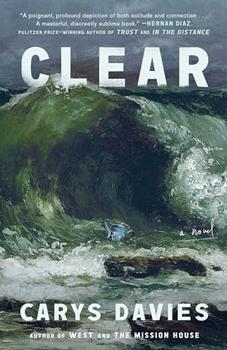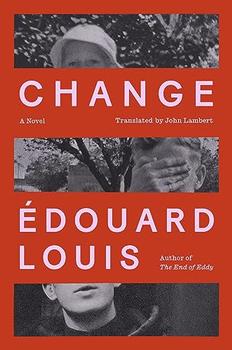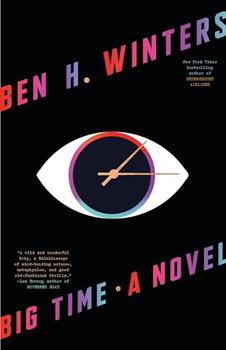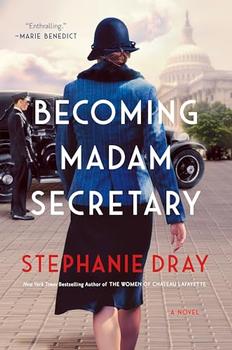M.L. Stedman answers questions about her first novel, The Light Between Oceans, a captivating novel that opens on a lighthouse in 1918 Australia.
Reproduced from RealSimple.com:
The Light Between Oceans' M.L. Stedman Answers Your Questions: Spoiler Alert!
Hello, Bookies:
Anyone who has already read The Light Between Oceans knows that it takes some twists and turns. But for those who might stumble across this blog post without having first read the book, its author, M.L. Stedman, cautions: "NB: Major spoiler alert! If you plan to read the book, I strongly suggest you read no further until you've finished it." And, in fact, Ms. Stedman reveals a lot about her highly regarded debut novel. Our sincere thanks to her for sending along her insightful answers. (Note: I've left all of Ms. Stedman's punctuation as is, true to the English-Australian publishing tradition.)
From reader Rosemary Wolfe: The lighthouse offered a twist that has me wondering - if they could have stayed on the island without ever going back to the mainland, would their isolation have allowed them to maintain the secret forever. Do we only do the right thing when someone is looking? Wonder if the author had that in mind when writing…
This is a great question, Rosemary. I suppose what struck me was how it can be easier to fool ourselves when we don't see the effect of our actions on other people they affect. 'Out of sight, out of mind', like all clichés, is based on a truth. I think in this case, it's not that Tom and Isabel would 'only do the right thing when someone's looking' (Tom in particular has a deep drive to do the right thing) - it's more that it's easy to be confused about what the right thing is if you're isolated and don't have all the facts. On Janus, there are no people around to act as 'moral mirrors', reflecting their behavior back to them. Personally, I doubt that Tom could have lived his whole life burdened by the lie - my guess is he would have had to act sooner or later.
From reader Karissa Swanson: How did you come up with the story? Have you visited or worked in a lighthouse? Did you know the ending you were headed for when you started writing the story?
Ah, that's three questions, Karissa! So, taking them in order:
I write very instinctively, letting a picture or phrase or voice come into my mind, and just following it. For this story, the setting turned up first - I closed my eyes and saw a lighthouse, then gradually a woman, and I knew it was a long time ago, on an island off Western Australia. Then a man appeared - the lightkeeper. As I wrote, a boat washed up, with a dead body and a crying baby, so I had to keep writing to see what happened.
I visited several lighthouses in the course of writing the story. (I'd love to say that I've worked in one, but alas, there aren't many jobs going 'on the Lights' these days…) I also did a lot of research on lighthouses, and went through the lighthouse records in the Australian National Archives. It was amazing to read the old correspondence, and hold in my hand the leather-bound logbooks like the ones I imagined Tom handling.
I had no idea how the story would end until it ended: In one sense, it really could have gone any way. I loved having complete freedom to see where it wanted to go. Because I don't plot, I didn't have to contrive a way of getting to a given destination. Having said that, in some ways the ending arose simply from letting the characters be who they were - letting them play out their values and desires.
From reader Alison Gauld: What emotions were you experiencing or trying to convey while writing the ending post Isabel's confession? I know that some described it as a peaceful end or lonely for Tom but I found it a bit haunting with ghosts of what might have been.
I know what you mean, Alison. I think the ending's a bit of an 'ink blot' test that reflects back one's take on life. To my mind, Tom and Isabel went on to have a good marriage, and their love was deepened, not broken, by all they'd been through together. Above all, they forgave one another and, eventually, themselves, for their mistakes and failings. I think Tom is unflinching at the end - he is able to hold in his soul all those aspects you mention - he is at peace, he is alone, he has been granted some gifts in life and denied others. There isn't a 'but' missing from that sentence. He opens himself totally to the fullness - the pain as well as the happiness - of his time on earth.
From discussion leader Erin Henry: Though I was ultimately glad that she ended up raising Lucy-Grace, I was initially very resistant to Hannah. I kept hoping that Isabel and Tom would either get the child back or, short of that, continue to have a role in her life. Were you hoping that readers would feel conflicted about Hannah?
It's always interesting, Erin, to hear how different readers respond to different characters. I've met some very 'pro Hannah' readers, and some who, like you, really didn't want her coming between Lucy and the person she thought was her mother. I wasn't hoping that readers would feel conflicted by Hannah specifically, more just by the whole situation. I wanted there to be no safe place for them to rest - for the dilemma to remain dynamic throughout the book, just like things are in real life.
From deputy editor Maura Fritz: The incident in Part 1 of Tom saving the woman on the boat (who later turned out to be Hannah) gave us important insight into his character early on and but in the long run, in terms of his connection to Hannah, for me it was something of a red herring. How did you see it? Why did you think it was important to make Hannah the woman on the boat?
This is harder for me to answer, Maura, possibly because I didn't have a particular agenda about it. I suppose I was quite interested by the effect on both Tom and Hannah of this knowledge of an intimate connection they'd shared and long forgotten: a highly charged bond from which Isabel was excluded. And I'm also interested in how our view of people can change with time and circumstances: At that moment on the boat, could Hannah ever imagine feeling anything other than gratitude to her rescuer? And, years later, to the rescuer of her daughter? Only once I'd finished it did I notice that the theme of 'the kindness of strangers' runs right through the book.
Some of our readers have commented about what they believe the lighthouse (and the light itself) symbolize. What do they symbolize for you?
As you can imagine, my answer to this is a long one!
A lighthouse automatically implies potential drama: You only find them where there's a risk of going astray or running aground. They're stoical guardians in places of danger. They're a reminder, too, of human frailty, and the heroic endeavour of mankind to take on the forces of nature in a ludicrously unfair fight to make safe our journey through this world. And they betoken binary opposites such as safety and danger, light and dark, movement and stasis, communication and isolation - they are intrinsically dynamic because they make our imaginations pivot between those opposites.
They're also a rich metaphor for what the characters experience, especially Tom and Isabel. For a start, there's light and shadow, especially in the Jungian sense of the shadow side of human nature, and questions about what the characters suppress or disown. Lighthouses don't move. They are dependable, efficient and concerned with others' safety. I see Tom as the lighthouse and Isabel as the mercury that allows him to move whilst staying anchored. Looking at a lighthouse at night, we can only see a light - we can't tell what's going on inside it or even see the structure that supports it. And the lighthouse cannot illuminate the space closest to it: its light is only for others. The one person Tom can't save is himself.
The Janus light rotates, going dark then returning a few seconds later. You can only identify it by looking at the whole pattern, not just the light or the dark in isolation. In life, too, it's important to take people as a whole, and in particular not to focus just on flaws or moments of weakness. There's something about having faith, in the moments when the light is obscured, that it will come back. Later in the story, Tom tries to keep faith that he will see Isabel again, even when she's lost in darkness. And I also see a parallel between the lantern lens and the characters' actions: The light is a tiny flame that is magnified and reaches far beyond the lightkeeper's sight.
Reproduced from RealSimple.com by permission of RealSimple.com and the publisher, Scribner Books.
Unless otherwise stated, this interview was conducted at the time the book was first published, and is reproduced with permission of the publisher. This interview may not be reproduced or reprinted without permission in writing from the copyright holder.





The Funeral Cryer by Wenyan Lu
Debut novelist Wenyan Lu brings us this witty yet profound story about one woman's midlife reawakening in contemporary rural China.
Your guide toexceptional books
BookBrowse seeks out and recommends the best in contemporary fiction and nonfiction—books that not only engage and entertain but also deepen our understanding of ourselves and the world around us.